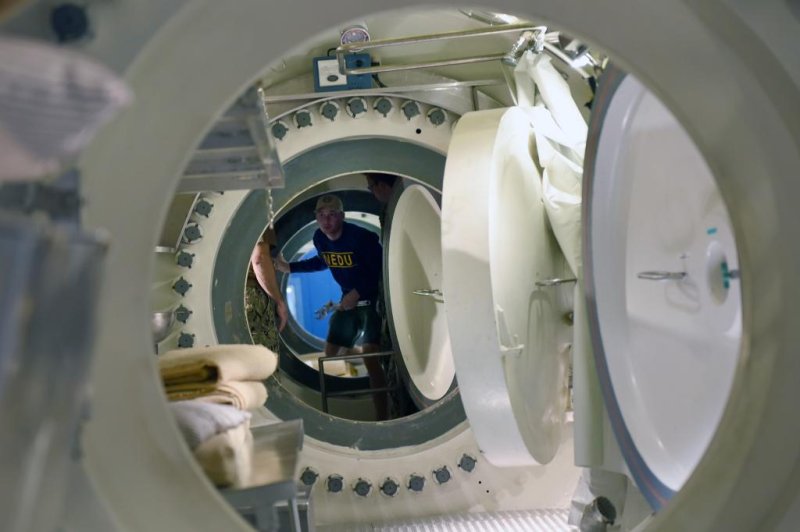The HeliCom Matrix is designed to compensate for helium-influenced speech during saturation dives. U.S. Navy photo by Mass Communication Specialist 2nd Class Fred Gray IV
Feb. 10 (UPI) -- U.S. Navy personnel completed an 11-day evaluation of the branch's HeliCom Matrix, a device designed to improve helium-influenced communications.
During the test, six Sailors with the Navy Experimental Diving Unit, or NEDU, at the Naval Support Activity in Panama City simulated a dive by being compressed to the equivalent of a 500-foot depth. Participants say the experiment was used to validate the new device's capabilities as well as their own.
"The importance of this dive was twofold," Cmdr. Jay Young explained in a press release. "First was to test new equipment that we will use in future dives and validate its operation, and second was to use this scenario as a training opportunity to maintain our proficiency for our watch teams and our divers to continue our saturation mission here at NEDU. This ensures we are prepared in the event we are called upon to support saturation diving operations in the fleet."
The HeliCom Matrix helped to descramble the divers' voices, which are distorted due to the helium mixture.
During the 11-day experiment, the Sailors were breathing a pre-made mixture of 94 percent helium and 6 percent oxygen, due to the effects of high pressures on air. The gas mixture was made by NEDU personnel three weeks prior to the saturation dive.
"We plan these dives a year in advance, possibly even more," Chief Navy Diver Teague Mangiaracina added. "We knew we were installing this equipment and needed to plan the dive around the testing."
Saturation diving is a technique used by divers to reduce the risk of decompression sickness, which can occur over long periods of time beneath the surface. According to Young, the technique serves as one of the branch's most critical missions.
NEDU uses saturation diving to evaluate diving, hyperbaric, and life-support systems and procedures. The unit's experiments also support biomedical and environmental physiology research.















